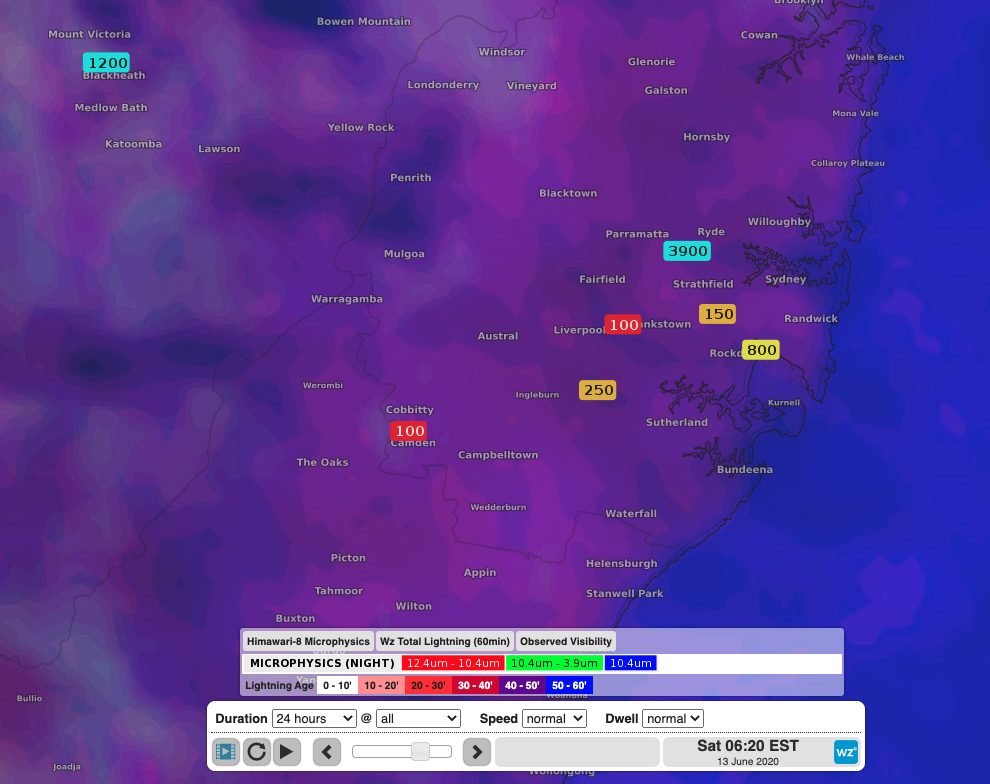A closer look at radiation fog

Many parts of western Sydney and further afield in NSW experience a rather foggy night last night, but what exactly happened?
In its simplest definition, fog is just suspended water droplets near to the surface of the earth. These droplets affect visibility, which for fog means visibility below 1000m.

Himawari-8 Microphysics showing reduced visibility across western Sydney this morning with observed visibility
One of the more common types of fog is radiation fog and requires a couple of conditions to be met. These conditions, being clear skies, light winds, low humidity aloft and a location over land, were met for parts of NSW last night.
On a clear night the earth's surface cools as heat is radiated out into space as long-wave radiation. Consequently, the ground cools and so does the air in contact with it, via a process called conduction. Should cooling continue, and there is enough moisture in air, it will begin to condense.
If too much cloud is around it acts as a blanket, preventing long wave radiation from leaving, leading to a warmer surface. Warmer air can hold more moisture than cooler air and as such condensation is more unlikely to take place.
Air is a very poor conductor of heat and as such only a very shallow layer near the ground is cooled. This is where light winds come in to play. A slight breeze will help mix the air a little, with cooler air then being distributed through a deeper layer.
However, if winds are completely calm then there is no mixing of the air and only the top few centimeters of air above the ground will cool, leading to only dew or frost, depending on the temperature. Should the winds be too strong, warmer, and drier air, is mixed down, effectively stopping any condensation taking place.
Radiation is usually relatively short lived once the sun rises. As the sun slowly warms the ground throughout the morning, it slowly warms the surface just above it causing the water vapour (fog) to evaporate from the ground up. Whilst it is common to hear the phrase ‘burning off’ when referring to fog disappearing, in actual fact it is dissipating.